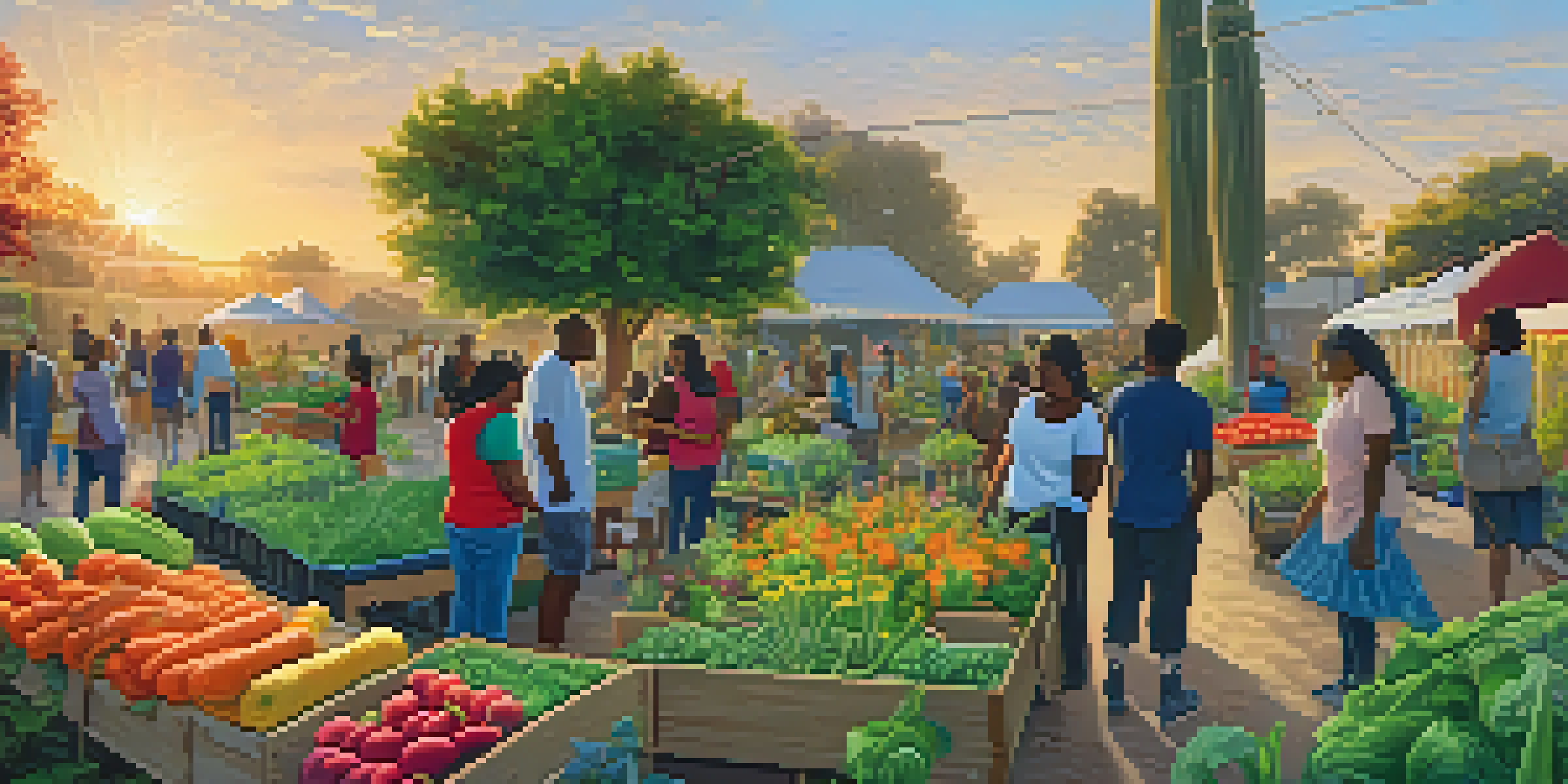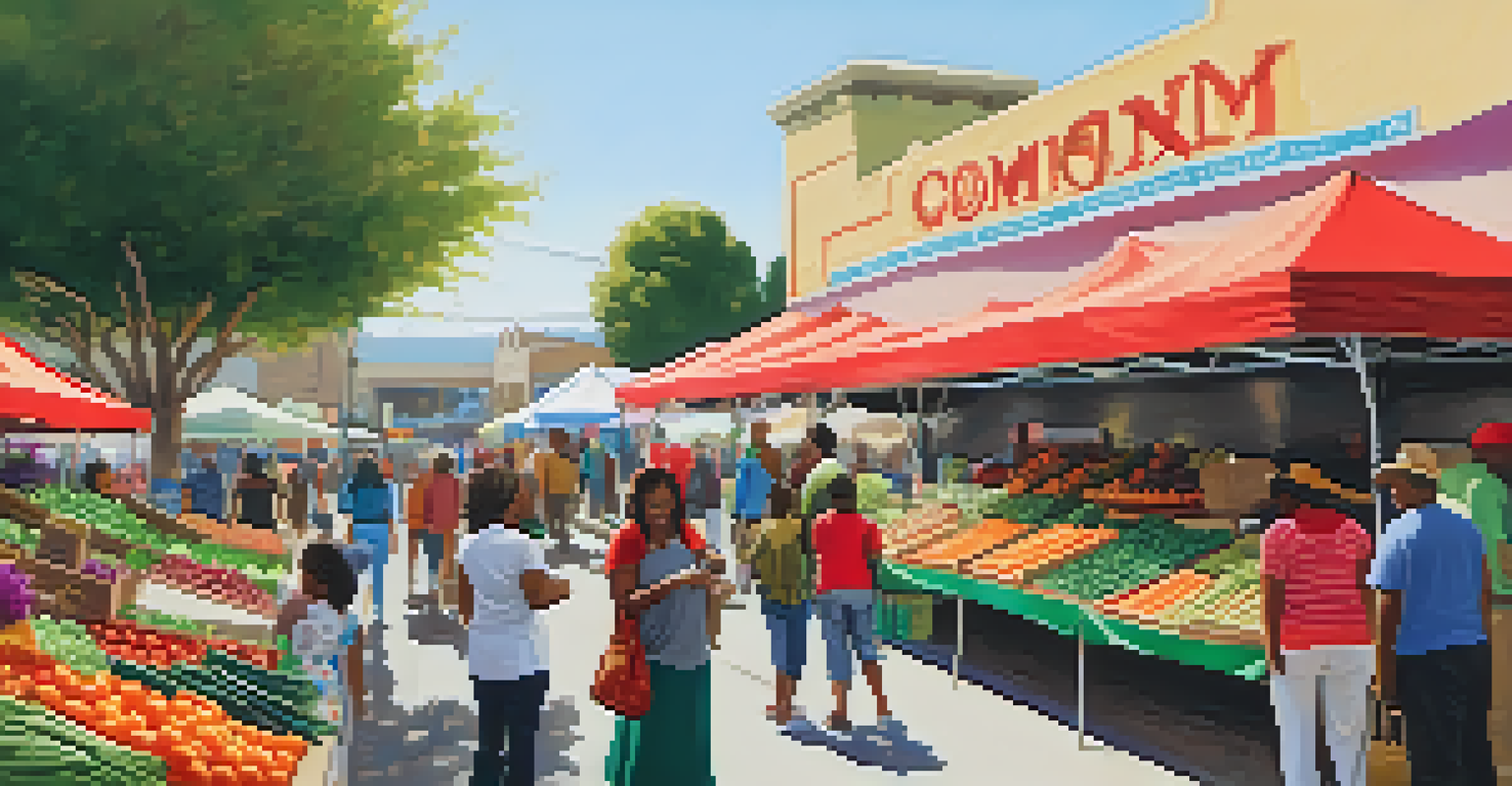Analyzing Food Access Barriers in Compton Neighborhoods

Understanding Food Access in Compton's Diverse Communities
Food access refers to the ability of individuals to obtain nutritious food. In Compton, this concept can be particularly complex due to the neighborhood's diverse population and socio-economic challenges. Many residents face obstacles that hinder their access to healthy food options, which can lead to negative health outcomes.
Food access is a fundamental human right that should not be compromised by economic hardship or geographic barriers.
The residents of Compton often rely on local convenience stores and fast-food outlets, which typically offer limited fresh produce. This reliance can create a cycle of poor nutrition, affecting overall community health. It's crucial to understand the local context to develop effective solutions.
By taking a closer look at these access issues, we can begin to unpack the layers of complexity that contribute to food insecurity. This understanding is the first step toward addressing the barriers that many residents face daily.
Identifying Economic Barriers to Food Access
One of the most significant barriers to food access in Compton is economic hardship. Many families live on tight budgets, making it challenging to afford fresh, healthy foods. Instead, they often have to choose cheaper, processed options that are less nutritious.

In addition to low income, the lack of transportation can exacerbate these economic challenges. Without reliable means to travel to supermarkets or farmers' markets, residents may find themselves stuck with limited choices. This situation is a stark reminder of how economic factors can directly influence food choices.
Economic Hardships Limit Food Access
Many families in Compton struggle to afford fresh, healthy foods due to tight budgets and lack of transportation options.
Addressing these economic barriers requires a multifaceted approach, including community support and initiatives that promote affordable, healthy eating. By understanding the financial constraints, we can better advocate for resources that make nutritious food more accessible.
The Role of Transportation in Food Access
Transportation plays a critical role in food access, particularly in areas like Compton where public transit options may be limited. Many residents lack personal vehicles, making it difficult to reach grocery stores that offer fresh produce and healthy options. This can lead to a reliance on nearby convenience stores, which often do not stock nutritious foods.
Access to fresh, nutritious food is critical for the health and well-being of any community, especially those facing socio-economic challenges.
Moreover, when public transportation is available, it may not always have routes that conveniently connect residents to food sources. Long travel times and multiple transfers can deter people from making the trip. This illustrates how transportation disparities can affect food choices and overall health.
Improving transportation infrastructure, such as providing direct routes to grocery stores, could significantly enhance food access in the community. By addressing these logistical challenges, we can help residents make healthier choices more easily.
Cultural Factors Affecting Food Choices
Cultural preferences significantly influence food choices and access in Compton. The community is home to a rich tapestry of cultures, each with unique cuisines and dietary practices. However, the availability of culturally relevant foods can be limited, leading to feelings of disconnection and frustration among residents.
Many grocery stores may not carry specific ethnic ingredients, forcing residents to travel farther or compromise on their dietary preferences. This can create a sense of food apartheid, where certain communities are systematically deprived of their food choices. It’s essential to recognize and celebrate this diversity in any discussion about food access.
Transportation Affects Food Choices
Limited public transit and personal vehicle access make it difficult for residents to reach grocery stores with nutritious options.
By advocating for more diverse food options in local stores and markets, we can support the community's cultural heritage and improve overall food access. Ensuring that everyone has access to the foods they love is a crucial step toward equity.
Health Implications of Food Access Barriers
The barriers to food access in Compton have serious health implications for its residents. Limited access to nutritious foods can lead to increased rates of obesity, diabetes, and other diet-related diseases. This situation is particularly concerning for children, who are still developing their eating habits and health foundations.
Moreover, food insecurity often leads to mental health challenges, as families grapple with the stress of not knowing where their next meal will come from. This can create a vicious cycle where poor nutrition exacerbates mental health issues, further complicating the community’s overall well-being.
Addressing these health implications requires more than just increasing food access; it also involves education and community support. By promoting healthy eating habits and providing resources, we can empower residents to make better food choices and improve their health outcomes.
Community Initiatives Aiming to Improve Food Access
In response to the food access challenges in Compton, various community initiatives have emerged to address these issues. Programs like community gardens and farmers' markets aim to provide fresh produce while fostering community engagement. These initiatives not only improve food access but also promote local economies.
Additionally, local organizations are working to establish food pantries and meal programs that cater to the specific needs of residents. By collaborating with local stakeholders, these initiatives can effectively reach those who are most vulnerable to food insecurity. This grassroots approach empowers residents to take an active role in improving their food environment.
Cultural Diversity Shapes Food Needs
The variety of cultural preferences in Compton highlights the need for diverse food options to ensure all residents can access their dietary staples.
Through these community efforts, we can see the potential for positive change. By supporting these initiatives, we can help build a healthier, more equitable food system in Compton.
Advocating for Policy Changes to Enhance Food Access
Advocacy plays a crucial role in addressing food access barriers in Compton. By pushing for policy changes at local and state levels, community members can work to create a more supportive environment for healthy food access. This may involve advocating for zoning laws that allow for more grocery stores or farmers' markets in underserved areas.
Additionally, policies that promote transportation improvements can make a significant impact on food access. By collaborating with local government and transportation agencies, advocates can help ensure that residents have the means to reach healthy food sources. This collaborative effort is essential for creating lasting change.

Ultimately, advocating for policy changes not only benefits the community’s immediate food access but also lays the groundwork for a healthier future. By empowering residents to voice their needs, we can create a more equitable food system in Compton.